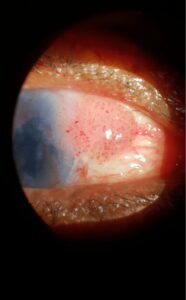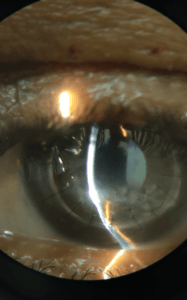Keratoconous
In Keratoconus, the cornea becomes thin and cone-shaped preventing light from focusing. As the disease advances the cone becomes more pronounced, causing blurred and distorted vision. Due to the irregular shape of the Cornea, patients with keratoconus are usually nearsighted and have a high degree of astigmatism that is not correctable with glasses.
The first line of treatment is to fit rigid gas permeable (RGP) contact lenses. It creates a smooth, even surface to see through. When vision deteriorates to the point that contact lenses no longer provide satisfactory vision, corneal transplant may be necessary to replace the diseased cornea with a healthy one. Even after a transplant, you likely will need the support of glasses or contact lenses for clear vision.
The first line of treatment is to fit rigid gas permeable (RGP) contact lenses. It creates a smooth, even surface to see through. When vision deteriorates to the point that contact lenses no longer provide satisfactory vision, corneal transplant may be necessary to replace the diseased cornea with a healthy one. Even after a transplant, you likely will need the support of glasses or contact lenses for clear vision.
Our Specialties




Symptoms of Keratoconous



